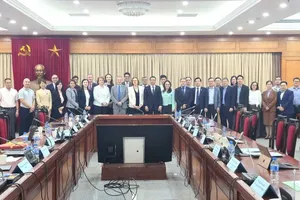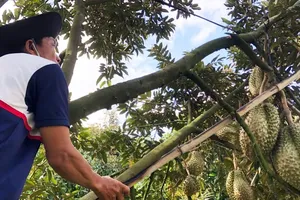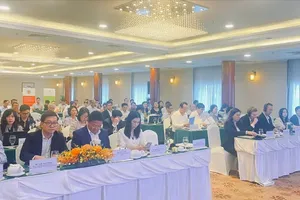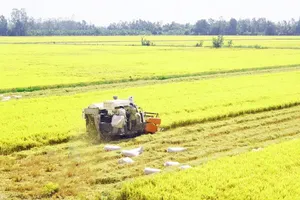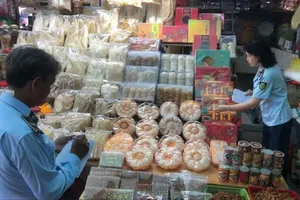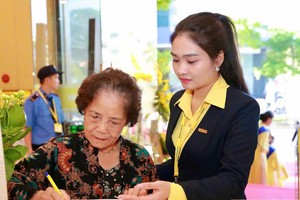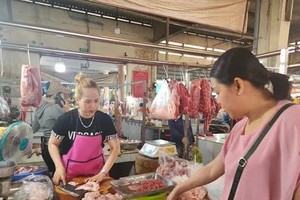
According to the Ministry of Industry and Trade, many Vietnamese agricultural products have gained significant international presence through the use of geographical indications. Conversely, numerous brands have missed key opportunities due to delays in securing protection.
Moreover, insufficient attention to the registration of intellectual property such as patents, designs, trademarks, artistic works, software, and trade secrets has exposed businesses to intense competition and constrained their market share.
Recognizing the strategic role of intellectual property, a growing number of domestic enterprises have recently pursued appropriate protection. Brands such as Vinacafé, Phu Quoc fish sauce, Vinamilk, Thanh Long instant noodles, and Hoa Loc mango have effectively leveraged intellectual property protection, including trademarks, geographical indications, and trade secrets to build strong brand identities. This proactive approach not only safeguards their products from competitive threats but also facilitates the expansion of their export markets.
Despite the significant role of small and medium enterprises, which account for 96 percent of all businesses in Vietnam and contribute 45 percent of gross domestic product (GDP), most Vietnamese companies still lack an effective strategy for leveraging their intellectual property, according to Chu Ba Long, an expert at An Phat Consulting Company.
He added that despite the availability of intellectual property rights, Vietnamese enterprises have been slow to register and leverage these protections. Consequently, numerous well-known Vietnamese brands have been claimed by foreign companies in the global marketplace.
He pointed out a troubling case. A Chinese company registered the Buon Ma Thuot coffee brand exclusively in China in 2010, barring the Vietnamese product from the billion-person Chinese market for years. After 6 years of legal battles, the brand was finally returned to Vietnam.
Similarly, Phu Quoc fish sauce was once registered as “Phu Quoc” by an American company, causing serious confusion about the origin of the product.
Sharing his experience in navigating market expansion challenges in China, Director Vo Trung Hieu of International Business at Vinamilk recounted that the company initially faced setbacks when its “Dielac” trademark was denied protection due to the prior registration of the similar “DULAC” trademark. To address this issue, Vinamilk, in coordination with legal counsel, submitted a request to cancel the “DULAC” trademark on the grounds of non-use over a continuous three-year period. This approach proved to be an effective strategy for overcoming trademark protection barriers in the Chinese market.
Furthermore, Director Hieu noted that intellectual property protection does not stop at registering trademarks but also requires monitoring and supervision to promptly detect violations. Vietnamese enterprises need to be proactive in protecting their intellectual property when expanding to the international market.
To use intellectual property as a strategic competitive advantage in the global market, Associate Professor Tu Diep Cong Thanh, Director of the Center for Intellectual Property and Technology Transfer at Ho Chi Minh City National University, emphasized that commercialization involves more than securing ownership rights—it requires maximizing the value of these intangible assets to generate tangible profits. To achieve this, businesses must proactively seek intellectual property protection both domestically and in key export markets.
With the same views, expert Chu Ba Long revealed that numerous Vietnamese companies only register their trademarks domestically. However, they overlook the fact that their brands lack international protection when exporting, leaving them vulnerable to appropriation by competitors. Therefore, according to him, businesses need to build a specialized department on intellectual property combined with training personnel to manage, monitor and exploit intellectual property systematically.
Businesses should prioritize fostering global collaboration in intellectual property matters. Establishing protection agreements with export markets is crucial for safeguarding the interests of Vietnamese enterprises internationally and reducing the likelihood of legal disputes when exporting goods.
Head Tran Giang Khue of the Southern Office at the Department of Intellectual Property stated that with government support, business initiative, and close collaboration between stakeholders, intellectual property can not only safeguard Vietnamese brands, but also serve as a lever to boost competitiveness and propel Vietnamese products into the global marketplace.
Being an official at a state organization, Head Tran Giang Khue of the Southern Office of the Department of Intellectual Property affirmed that intellectual property is not just a shield against legal risks, but also a powerful tool to enhance brand value, expand markets, and increase competitive advantage.
He took the Apple brand as an example. The success of this brand, in addition to products such as iPhone or MacBook, is a methodical intellectual property strategy, with hundreds of patents, trademarks and technology secrets.
Mr. Tran Giang Khue emphasizes that the State should enhance support for intellectual property protection, particularly for small and medium-sized enterprises (SMEs). Drawing insights from developed nations, these countries often have programs to subsidize the costs of intellectual property registration for SMEs. In contrast, Vietnamese enterprises currently bear these responsibilities on their own. Without targeted support policies, smaller businesses in Vietnam may struggle to effectively safeguard their brands.
